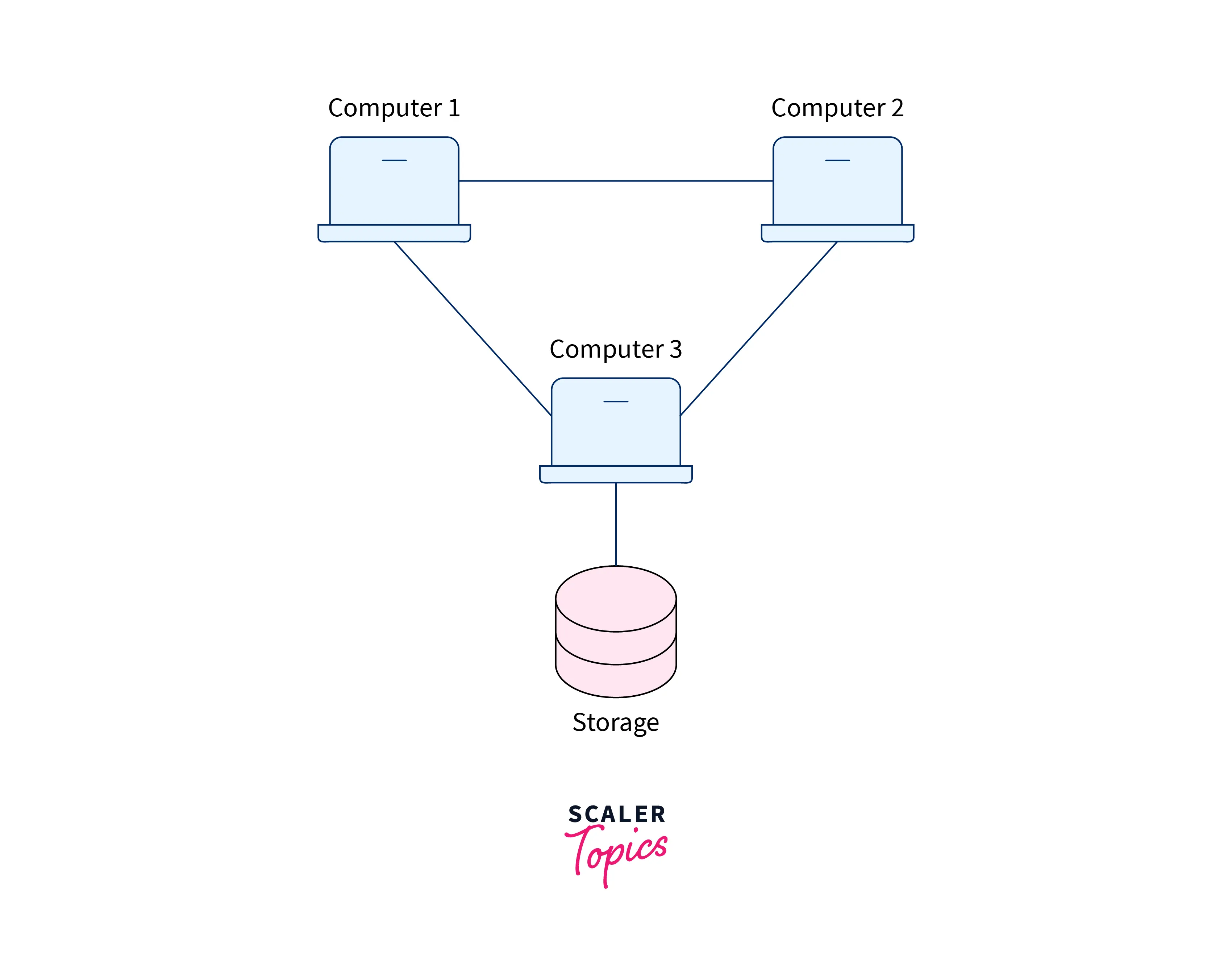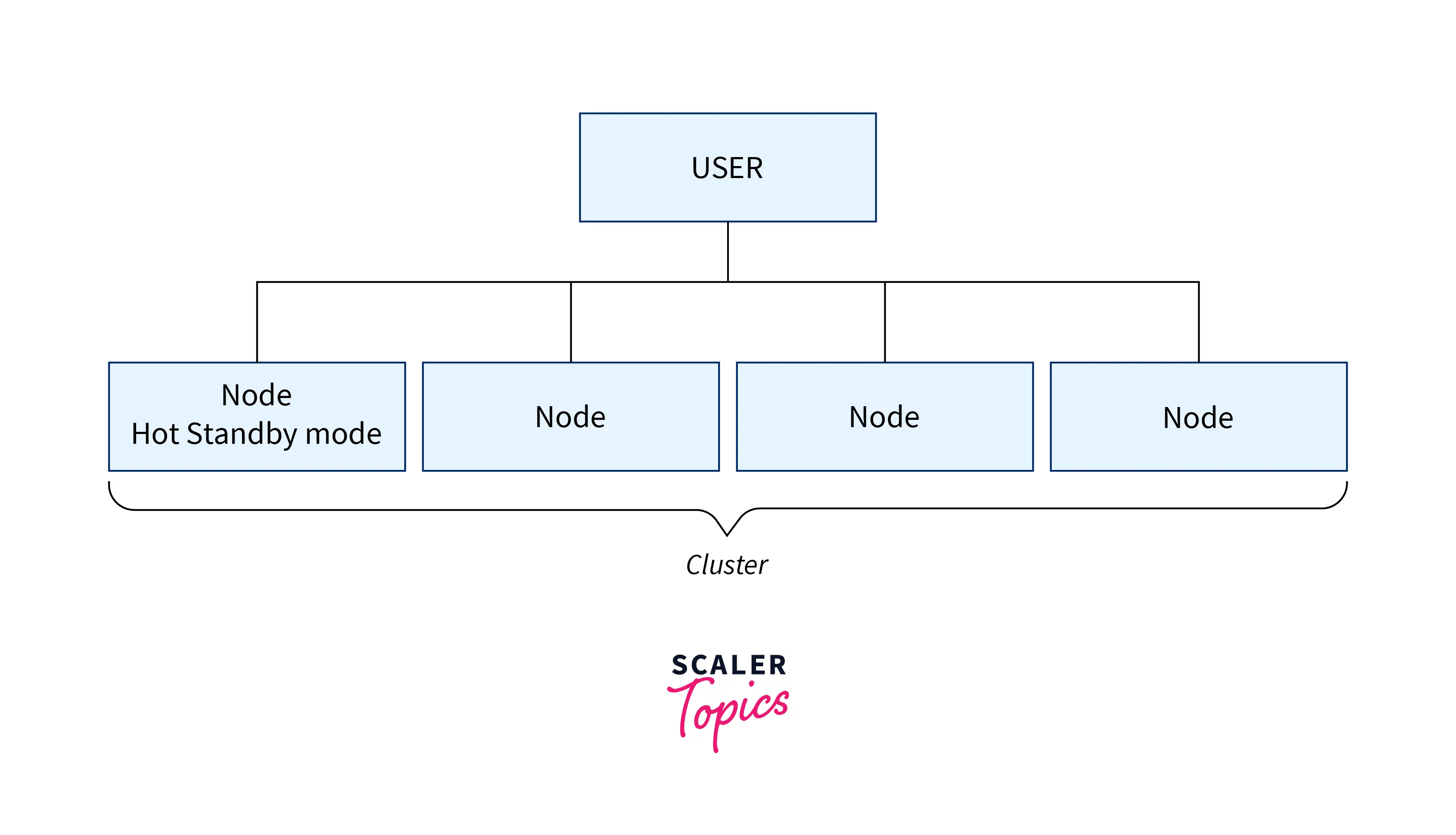Clustered Operating System
Overview
A group of computers connected in a local area network is called a Cluster System. Similarly, a clustered operating system is somewhat similar to the parallel system because both systems use multiple CPUs i.e. a group of computers. The difference between the two is that the clustered systems are composed of two or more individual systems linked with each other. In a clustered operating system`, the computers or CPUs share single storage, and they all cooperate to perform each task at once.
What is a Clustered Operating System?
Clustered systems comprise two or more individual systems that use multiple CPUs like parallel systems. The primary difference between the clustered operating system and the parallel system is that the systems are connected in the clustered systems and in the parallel systems they're not connected.
The below image shows the representation of the clustered operating system.

All the systems of the clustered operating system have independent processing power and capacity i.e. they have their CPUs and shared storage media. These systems work together with a shared storage media to complete all the tasks. The below diagram illustrates the meaning of the clustered operating system.
A cluster operating system is a combination of hardware and software clusters. The hardware clusters help in sharing high-performance disks between all the computer systems or the nodes. Whereas the software cluster ensures and manages the working of all the systems together. Each node in the cluster system contains the cluster software. This software keeps an eye on the entire cluster system and ensures it works properly. If any of the nodes in the cluster system fails, then the rest of the nodes of the system take control of their resources and try to restart.
Types of Clustered Operating Systems
There are mainly three types of clustered operating systems, and they are below:
1. Asymmetric Clustering System
In an asymmetric clustering system, one of the nodes is in a hot standby node i.e. it continuously monitors the entire system. All the other nodes run the required applications or tasks. The hot-standby node is a component of the cluster system, and it's completely fail-safe. The hot-standby node is used as a replacement if any of the nodes from the system fails. The below image shows the representation of the asymmetric clustering system.

2. Symmetric Clustering System
In a symmetric clustering system, all the nodes run applications and at the same time monitor other nodes as well. This type of clustering system is more effective than the asymmetric system as it doesn't have a specific hot-standby node instead all the nodes monitor other nodes in the system.

3. Parallel Cluster System
In a parallel cluster system, multiple users are allowed to access similar data on the common shared storage among the nodes. This is possible using special software and other applications.
Classification of Clustered Operating System
The clustered operating system can be classified based on its functionality, such as -
Load Balancing Cluster
As the name suggests, in this type of cluster the nodes in the system share the workload to balance the computing load which results in higher performance. For example, a cluster that is web-based may assign web queries to different nodes so that there is an improvement in the system speed.
High Availability Cluster
High Availability Clusters are also called HA Clusters. This cluster has extra nodes in the system and ensures that all the resources are available in the cluster. If any of the system components fail then the high availability clusters remove those nodes whose failure causes the stoppage of the system so that the application runs smoothly.
Fail Over Cluster
Fail-over is the procedure of transferring applications and data resources from a malfunctioning system to another system in the cluster. This cluster system is used widely for crucial applications or tasks such as mail, files`, etc.
Advantages of Cluster Operating System
There are various advantages of cluster operating systems and they are mentioned below:
-
Superior Availability: The failure of a single node in the system doesn't mean the loss of service or the task in the system. As every node in the cluster is running on an individual CPU and if any of the node failures occur then it can be pulled down for maintenance while the remaining nodes can take the load of that failed node and do not interrupt the service.
-
Efficiency: The cluster operating systems are more cost-effective as compared to highlyreliableand larger storage mainframe computers.
-
Error Tolerance: If any error or fault occurs in any of the nodes of the system then the system does not halt. Because the failed node can be swapped with the hot standby node in such situations.
-
Performance: The cluster operating systems results in high performance as there are more than two nodes available that are merged. These nodes work as a parallel unit and hence produce a better result.
-
Scalability: These cluster systems are scalable as it is easy to add more nodes to the system. This can increase the system's improvement, fault tolerance, and overall speed of the system.
-
Speed of processing: The cluster operating system offers great availability and performance speed over single computer systems.
Disadvantages of Cluster Operating System
-
High Cost: The major disadvantage of the cluster operating system is that it requires more cost to meet the hardware and software requirements to create a cluster.
-
Maintenance: The cluster resources are challenging to maintain and manage and thus require a high cost to improve the system.
Conclusion
- A group of computers connected in a local area network is called a Cluster System`.
- In a clustered operating system, the computers or CPUs share single storage, and they all cooperate to perform each task at once.
- The primary difference between the clustered operating system and the parallel system is that the systems are connected in the clustered systems and in the parallel systems they're not connected.
- Cluster operating system is a combination of hardware and software clusters.
- The types of clustered operating systems can be divided into three types: Asymmetric Clustering Systems, Symmetric Clustering Systems, and Parallel Cluster Systems.
- The cluster operating systems results in high performance as there are more than two nodes available that are merged.
